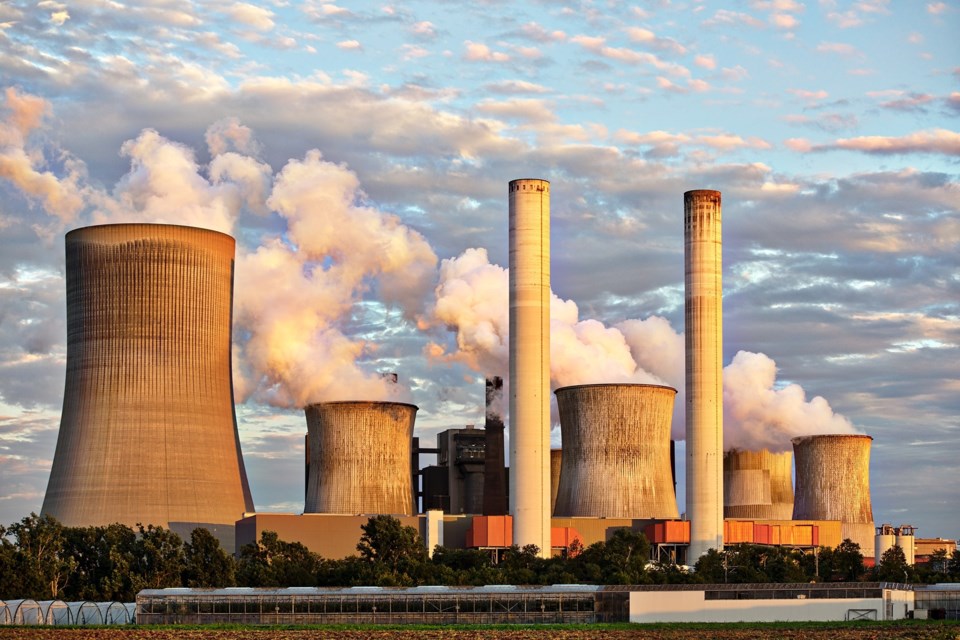The following question was sent in by reader Ian Kay in response to OPINION: Electrifying the world comes with challenges.
Your article repeats the assertion that "nuclear power is largely carbon-free."
The process of running the power plant is essentially carbon-neutral, but what about the life cycle? It would be interesting if you could dig up some more nuanced analyses. The construction of the plants use huge amounts of concrete. Production of concrete is a huge carbon emitter. Transportation of the concrete also contributes.
And the additives to make "heavy" concrete have to be mined and transported. Then the uranium is usually mined in "remote" locations and the mines run on diesel as does the transport. I recall reports over 20 years old now that the estimated uranium reserves are insufficient to meet projected demand.
It might be an entertaining exercise for you to refresh this view of nuclear.
*************************
This is an excellent question, Ian.
Building nuclear generating plants certainly emits lots of carbon dioxide. Their containment structure is made of steel-reinforced concrete several metres thick, supported by a reinforced concrete slab. They contain many kilometres of hefty plumbing carrying cooling water to and from their steam turbines.
I could go on, but you get the picture.
However, an 800-megawatt nuclear power plant unit (Bruce Nuclear has eight, not all of which are running, Darlington has four, Pickering has eight smaller units...) generates prodigious amounts of electricity. They are built to last 50 to 60 years. Over time, their carbon emissions per kilowatt-hour of electricity becomes tiny, less than some hydroelectric installations whose dams require immense amounts of reinforced concrete.
Wind turbines sit on heavy concrete bases. Their towers are either made of steel or concrete. These contribute to the carbon emissions (small, but not zero) of their electricity.
Barrie’s sewage treatment plant produces electricity. A recent tour of the plant revealed its complexity and how much concrete was needed to build it. We have no power-producing device which is truly carbon-free.
The mining of uranium ore, crushing of the rock, plus transport and refining into fuel rods creates relatively minute amounts of carbon dioxide.
The bottom line is that nuclear power can be considered essentially carbon-free. Hydro power, wind power, solar, and electricity produced from biogas are all very low carbon emitters relative to their output.
Your final point is very real. Nuclear power depends on uranium, which is a “fossil fuel.” On creation some five billion years ago, our planet was endowed with some uranium. This has been decaying for millennia.
When we “burn” the uranium in a nuclear power plant, we simply speed the decay process, increasing the rate of heat output.
We are currently mining and refining uranium deposits containing about one per cent uranium. Approaching 0.1 per cent, mining and refining will consume more energy than the uranium can produce, making nuclear power pointless.
Meanwhile, on a sunny day, glance up at the sky where there is an immense nuclear power plant running on atomic “fusion” (our nukes are “fission” reactors). The sun’s gravity crushes hydrogen atoms together to form helium, releasing large amounts of energy as heat and light. It also releases highly lethal ionizing radiation.
Fortunately, it's 150 million kilometres away. That’s distant enough for its radiation to be almost harmless – but beware of sunburn and skin cancer.
The amount of energy available to us from this resource is about 340 watts per square metre of planetary surface, averaged over the global surface, day and night and many times greater than our planet’s need for power.
Peter Bursztyn is a self-proclaimed “recovering scientist” who has a passion for all things based in science and the environment. The now-retired former university academic has taught and carried out research at universities in Africa, Britain and Canada. If you have a question Peter might be able to answer or something you’re curious about, email [email protected].



